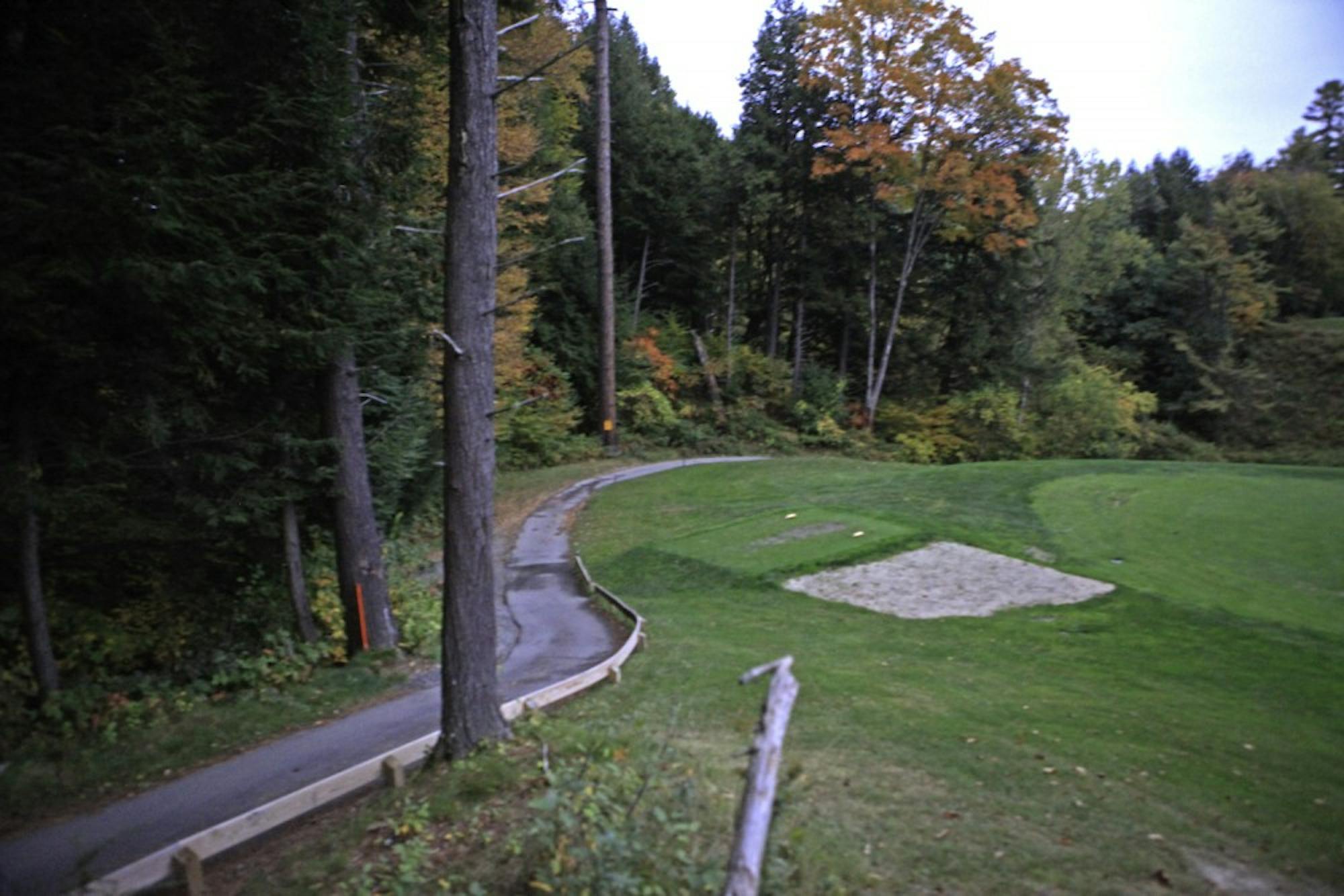The College and the Town of Hanover are working together to improve trails in Pine Park, a privately managed forest reserve near campus, by building a bridge over a crossing near the mouth of Girl Brook, where it flows into the Connecticut River. Construction is slated to begin the week of Oct. 13 and scheduled to finish by Thanksgiving, Hanover public works director Peter Kulbacki said.
Local residents, including students, have complained that unpredictable water levels make the crossing, which consists of a few stepping stones, is often difficult to traverse.
The track and cross country teams used to race through Pine Park, but stopped several years ago because runners were injuring themselves trying to cross, deputy director of the College’s outdoor programs office and Pine Park Association trustee Brian Kunz said.
“I’m a runner, and I have had many cases where I misjudged and ran down Girl Brook underneath the Charles Bridge and across a little crossing where there’s a good rock-hopping place, but then get down to this second crossing and turn back because I’m going to have to get my feet wet,” said William Young, a Pine Park Association trustee.
The 40-foot-long and 6-foot-wide bridge, which will be supported by three I-beams, is designed to accommodate small vehicles as well as hikers and pedestrians. It is also expected to make the crossing safer and more dependable, said Young, who serves as chair of Hanover’s bicycle and pedestrian committee.
The project is estimated to cost $50,000, Young said. Of that sum, the Pine Park Association will contribute $25,000 in construction materials, and Hanover public works will provide $25,000 in labor.
Pine Park is jointly administered by the Town of Hanover and the Pine Park Association, a private nonprofit organization founded in 1900 to conserve pine forests on the banks of the Connecticut River. While the College does not directly fund the management of Pine Park, the College’s department of facilities operations and management helps maintain and repair trails.
Building a bridge was originally proposed about 15 years ago, and serious consideration began several years ago, with plans being drawn up over the past year, Kulbacki said.
The primary challenge concerns the engineering of the bridge. Since the stream is narrow and meanders in either direction, deciding where to put the landings was difficult, Young said. Variations in stream flow also pose a challenge.
Falling behind schedule is another concern, Kulbacki said, as the project requires coordination between the College and public works department.
Austin Caldwell ’15, a member of the Nordic ski team, said he welcomed the change. He said the bridge will make a difference particularly in the spring, when the water is higher.
This project brings into focus a broader problem of soil erosion. Kulbacki said the rapid development in the last 50 years, both residential and at the College, has contributed to the process of erosion.
More recently, construction near the 13th hole on the College’s golf course, which is upstream from Girl Brook, has caused the erosion on the banks to accelerate, he said.
The Pine Park Association is taking care to ensure the bridge and the construction process have no adverse effects on the environment, Young said.
“[Environmental concerns] have been raised, but they have been raised by us,” Young said. “Part of the reason why it costs so much is we’re trying to build a bridge that doesn’t do any damage.”
Correction appended: October 8, 2014
The Pine Park Association, not the College, is providing $25,000 in construction materials. The article has been revised to reflect this correction.




